This is part of the #STL2039 Action Plan storytelling series in partnership with Humans of St. Louis.
Serena: I focus on strategic partnerships. So figuring out who needs to be involved in decision making when you have a complex issue that touches more than one area of concern. Because I am seated at the St. Louis Mental Health Board, much of our work centers on behavioral health, but understanding that you can’t really have health or peace or prosperity or anything if you don’t have good mental health. It’s all connected. I was brought on board to expand the way people think about behavioral health and to start looking more intentionally at those intersections so people could understand their role in supporting behavioral health and not treat it as a separate thing from what they might currently be working on in their regular space.
Erica: My background is in public and business administration. Now I work for a quasi-governmental agency and my role as the director of the St. Louis Promise Zone is to be a convener and facilitator of dialogue to bring those strategic conversations together under the six goals of the Promise Zone. And also being a champion for a distressed community that does not have a voice in economic development. So being able to work with Serena and many others in the community to ask, “What are you doing and how can we help advance that work or identify resources to facilitate additional conversation?”
Serena: We met in the Health and Wellness subcommittee for the Promise Zone. I didn’t have any working relationship with the Promise Zone before that. I didn’t know Erica, and I don’t even remember how I was invited to the meeting, but at some point…
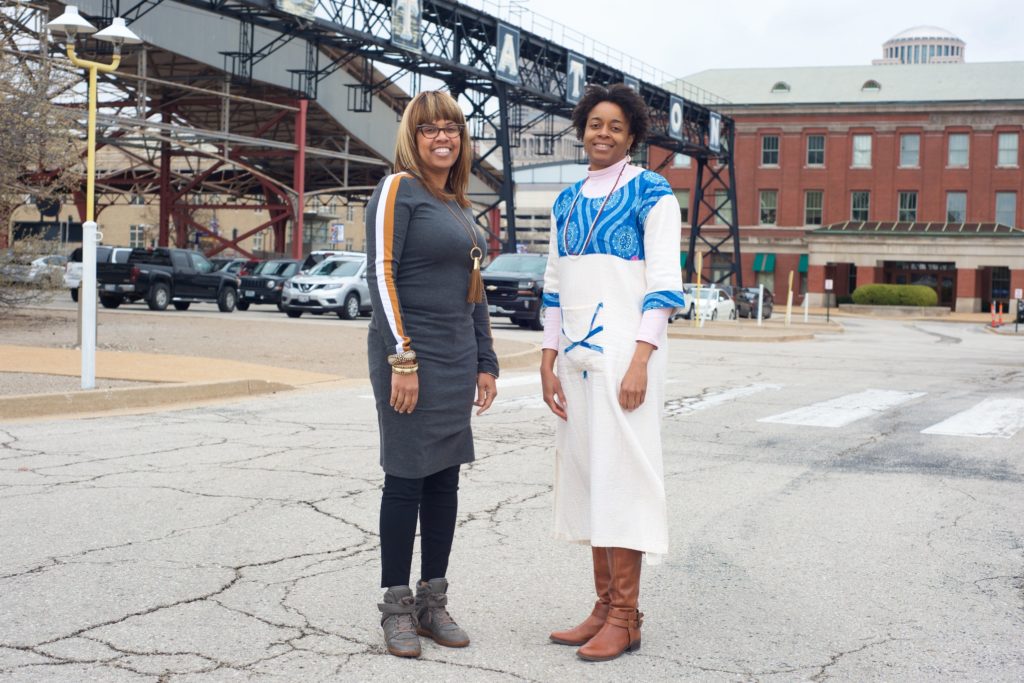
Erica Henderson and Serena Muhammad. (Photostory by Lindy Drew/Humans of St. Louis)
Erica: Bethany Johnson-Javois who chairs the Committee told me about Serena. I said, “I’ve got to get to know her.”
Serena: See, I didn’t know that! Long story short, I showed up at the meeting. I was really impressed by what the Promise Zone was working on and I wanted to make sure that the Mental Health Board was represented.
Erica: I had seen Serena’s work and name in the community as a person that is a true champion of the work who says, “How do we get it done? What do we need to do to move forward?”
Serena: The Health and Wellness subcommittee is still active. One of the things that’s a challenge is that when you’re doing coordination or systems level work, it takes time and you don’t have immediate tangible products that come out of it. So a big part of our work is getting people to think differently about how we work together. One of the things that I saw the first meeting that I attended was an opportunity to get people to stop duplicating efforts and to have a shared goal around what we could work on together. We spent a lot of time trying to understand what was already in place, what had momentum, and where we should focus to make sure that we were filling any critical gaps. Traditionally, that’s what I do in most of the meetings or rooms that I’m in.
I have all of these network maps in my mind and what I recognize is that if you don’t have the responsibility of thinking through connections all the time, it is very easy to not see the connections even when they could be right in front of you. So what happens in a lot of these meetings is you have people go to a meeting about data, and then they’ll go to another meeting about data, and it doesn’t occur to them to say, “Hey, I was just at a meeting about data. How does this connect?” So I try to make sure that I help to make those connections and because Erica had assembled key partners that needed to be in the room that are decision-makers related to health, it was an excellent opportunity to get people to start thinking about some cross-pollination.
People go to a meeting about data, and then they’ll go to another meeting about data, and it doesn’t occur to them to say, “Hey, I was just at a meeting about data. How does this connect?”
So much of what we began with was looking at where there was overlap, understanding the root causes that all of us were trying to address – even if we didn’t realize we were addressing them directly – and then prioritizing what that critical challenge was that nobody felt like they could move the needle on. And what came out was to look at economic mobility. So we had conversations early on about, what does it look like and what is a successful model to move somebody out of poverty? Our responsibility as service providers is to do that so that we can stop saying, “We know it’s poverty, but we’re going to work on this other thing anyway.” And then I’m getting people to look at how we were already investing our resources, whether they were exacerbating the issue or potentially alleviating it. So, what have we done and what are the end results? We’re still working as a subcommittee, but I’m optimistic that we’re starting to think about our strengths and abilities differently so that we don’t shy away from the most difficult tasks.
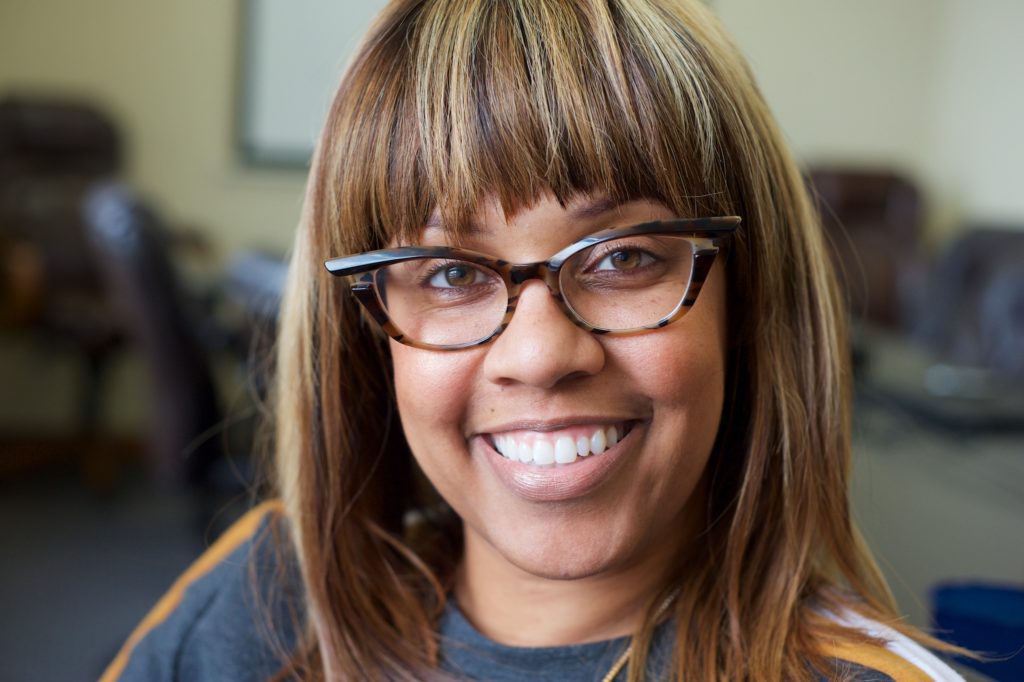
Erica: The Promise Zone is that umbrella that gives us an opportunity to say, let’s have intentional focus on this set geography and bring all these service providers together so that we are not being duplicative of the things that we’re trying to accomplish with improving overall health and wellness. Additionally, how do we incorporate health in all policy work? That is happening with partners who are already doing that work and making sure that they’re engaged in sharing their learnings. I am not an expert in all things and there is no need to reinvent the wheel. So bringing all of these service providers, doing the direct services with residents, to the table to say, “What are some of the successes or challenges that you all have had? What are some models or examples that we should be looking at to tweak or fit the St. Louis footprint?” Economic mobility has been one of those discussions to figure out what are some of the social determinants of health and how are we incorporating those things.
Prioritizing the workforce is a key component if we’re talking about mobility. So make sure that we are being as comprehensive and holistic with the approaches we’re talking about? Also encouraging people not just to collaborate at this table or to collaborate in silos, but to ask, “How are you looking collaboratively and with an equity lens in all of the work you’re organization is doing?” Serena’s been really good at saying, “This is happening over here and perhaps we need to collapse some of the work that is happening there.” An example of the Promise Zone not wanting to be duplicative is collapsing the reducing crime table. In this work, we need to have the ability to recognize all of these tables are having the same dialogue. How do we have one conversation even though there are some of the same people and then some new people who are not connected to that work?
What’s been the biggest challenge from doing this work?
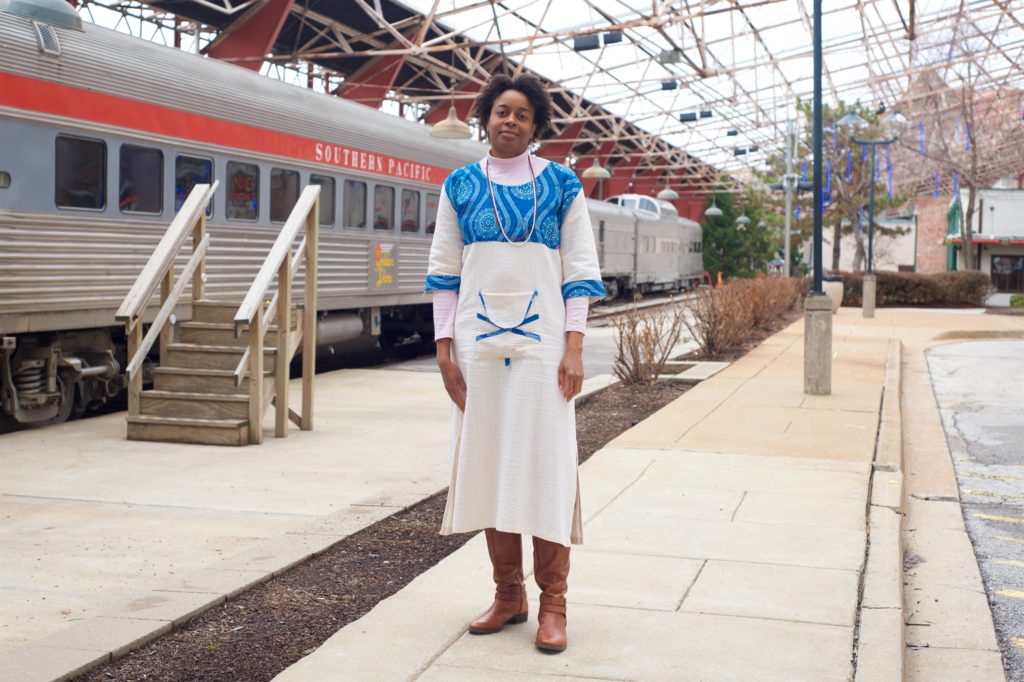
Serena: It’s slow. I mean, snail’s pace slow. The whole reason I got into philanthropy — because I used to have a non-profit organization — was that I felt like the way people were investing resources never really got to the folks who had the most critical need. And I believed that if I got into philanthropy, I could shift how we think about working in community and working with community. What I have learned is that there is no urgency in philanthropy. There is no accountability. It is so far removed from community that the folks who are actually making the investments have very little to no firsthand experience. But the issues that they’re trying to address, and the folks who have whatever those issues might be, have no direct connection to anybody in philanthropy. So everything is like a second or third generation relationship, which is why the problem solving takes so much time. If it’s not your issue, and it’s not your problem, and you have a year to think about it, then the solution that you will develop is going to be much different than if it directly impacts you right now today.
If it’s not your issue, and you have a year to think about it, then the solution that you will develop is going to be much different than if it directly impacts you right now today.
The thing that’s frustrating for me is recognizing that I’m in a sector that can take as much time as they want, spend as much or as little as they want, and there’s no external pressure to change any of that. And then to also work in community where you’re seeing the need pressing down every day on people and holding the tension between those two spaces. You want to be sincere and authentic, but at the same time recognize, “I’m a part of philanthropy now. I’m a part of the reason that this person’s problem is not being solved quickly enough.”
What do you know about the Racial Equity Fund and how could it help with the work that you do?
Serena: I liked that you qualified it with the idea of the Racial Equity Fund because I’m not sure how much support it has received.
Erica: Or what support Racial Equity has received period.
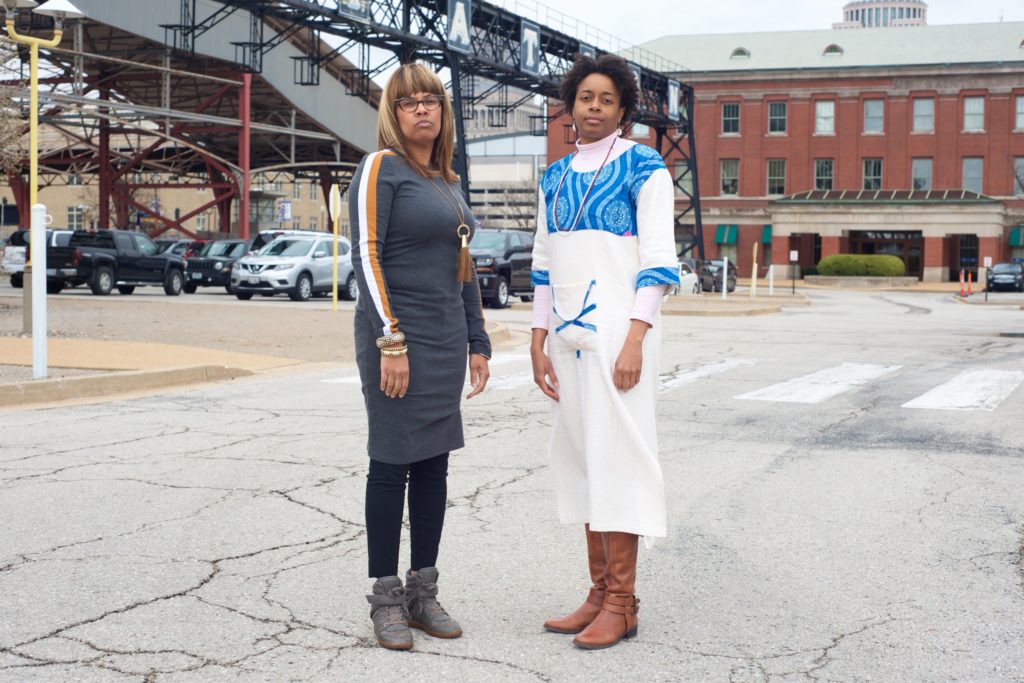
Serena: You can’t have a fund for something you don’t believe in. St. Louis is very risk-averse and it’s a city that has designated leaders and decision-makers, whether they are who you would expect to be the decision-makers or not. We have old families that have been here forever and, before you do anything, that family has to greenlight it, or invest in it, or be behind it. Trying to shift how we think and how we do things is more difficult here than it might be in other cities. So this idea of Racial Equity threatens the status quo. It’s safe to say that it’s a good idea, but there is an inherent fear that by doing something different some group of people will lose something that they don’t want to lose that they’ve always had.
So often the conversation, honestly, is very patronizing. It’s very, “We’re going to let you have that so that you will remain calm and not disrupt our city again.” It’s not, “We want to do this because we believe in it and we understand why it’s important.” And then for those folks who do understand, they have that same dynamic of being surrounded by people who don’t have the same belief, or urgency, or willingness to change anything. So it’s difficult to change a whole group with one or two people who get it. And that’s what the Racial Equity conversation feels like. It feels like a lot of people participating in the conversation because they feel like it would look bad not to participate, but not actually taking the steps to do things differently that are required.
When the report came out with 189 calls to actions, it was like, “Okay, did you really want me to read that whole document and figure out how I implement some of that into our daily work?” Yes.
Erica: I would agree. I would also say that, yes, people were on board, and champions in 2014, with the Commission, and the process… And then the roadmap of 189 Calls to Action came out empowering corporations, organizations, and community to identify their roles and the pieces they could move forward to work towards Racial Equity. When the report came out with 189 calls to actions, it was like, “Okay, did you really want me to read that whole document and figure out how I implement some of that into our daily work?” “Yes. The document was long and you may not know how to develop an implementation strategy, however; have you circled back to Forward through Ferguson for assistance?” We need to be more accountable as a community as we work towards equity across the board for all. The collective power of people, place, and purpose with intentionality will be necessary to move the agenda forward. We continue to sweep race and other social injustices under the rug. Time out.
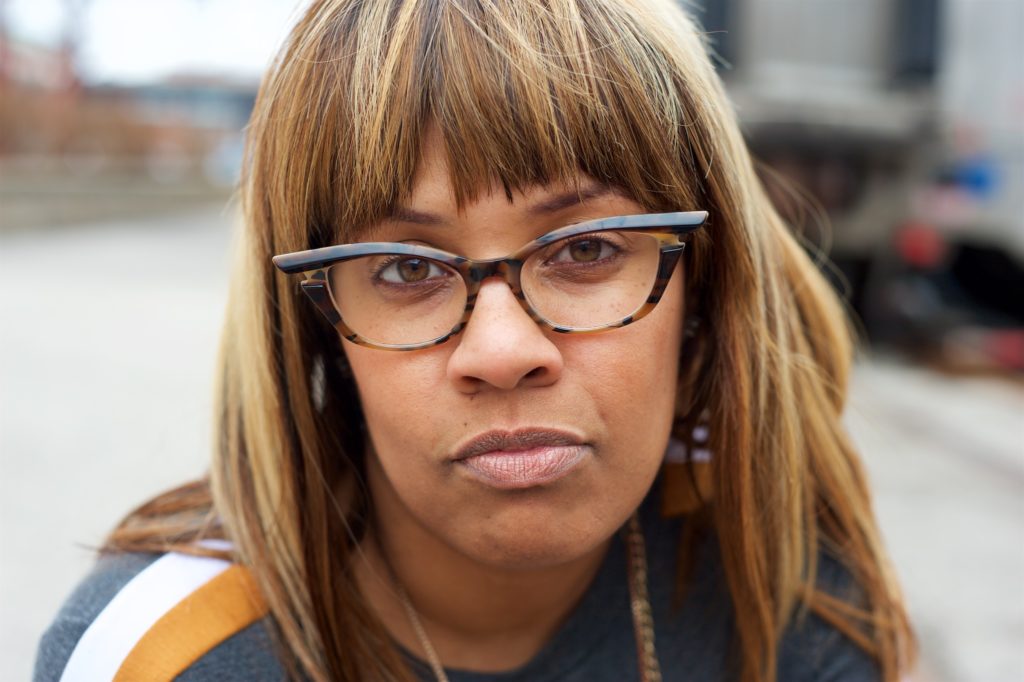
And there’s still the question of what does FTF really do? People are saying that they don’t understand the need for an organization to say, “How do we advance equity?” before something that people don’t deem important for advancement. Some are saying, “Things are good. Things are fine. We’re moving forward. We’re addressing this, that, and the third. But we’re not talking about equity across the board.” And in order for us to be this progressive and growing community that we so desire, we will never get there until we have these hard conversations and break down some of the stereotypes.
And it’s about history. If the topic has never been important and then we’ve got the same leaders in place who say, “This over here is important. This over there is important,” and they’re blessing those things, then we’ll never get there. We have to determine, how do we bring those people into accountability so that we could get to the fund if the ultimate goal is to get them to put resources into something that they don’t seem important? I’ll even say starting with the ABAR training – trying to get people to go through that and understand the value-add that they may not know they have these biases that are a part of their day-to-day work – people don’t think that they need that. So educating of the community has to happen in order for people to buy in.
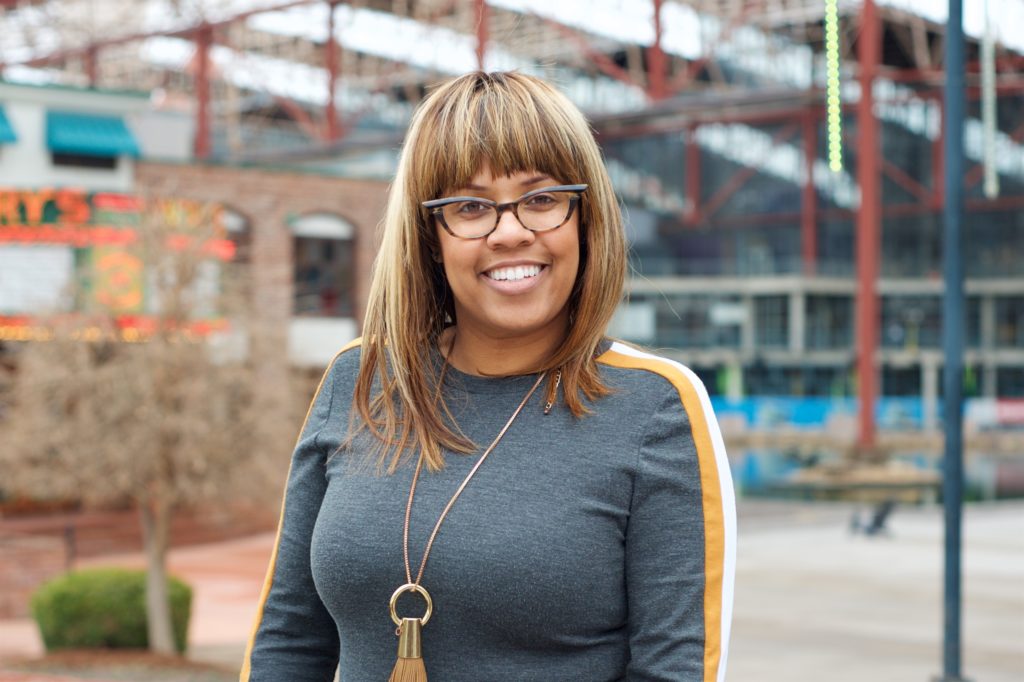
How do you incorporate Racial Equity into the work you’re doing?
Erica: We have made it a part of our certification process. We will not certify your grant without you walking us through how you have applied a Racial Equity lens and how you are partnering. Because if we’re saying collaboration, you should be looking at how to partner for the most comprehensive, holistic approach for true collective impact. Promise Zone wrote a grant to get a shared staff person for FTF and the Promise Zone to ensure that the goals are aligning with the calls to action to demonstrate commitment to elevating why Racial Equity is important.
And just having the ability now, within our organization and with all of the partners, to say equity. We are constantly talking about Racial Equity, whether it’s bringing in Cristina Garmendia from the Equity Indicators project that the city is getting ready to launch, or making sure that FTF is a part of the dialogue and the conversations for the working groups. The Promise Zone is community development. It’s people development. It’s also economic development. This work is important. This is why if you’re not building people, there’s no way that you’re going to build community and economic development. And for communities, you have to have all of these services in addition to private institutions and businesses that come in to create a cohesive neighborhood.
Where have you made progress in the work that you’re doing that you’re happy to celebrate?
Erica: Honestly, it’s slow and hard work. It’s that conversation over and over again of, “What do we need to do? Who can do it? How do we advance it? Not another report because the framework has been given between the calls to action and for the sake of all. Action is required for implementing some of these strategies and movement forward? Is that the best strategy to move forward and are the right partners at the table for a successful execution? The collaboration and bringing together the variety of agencies and service providers to discuss opportunities for partnership has been enlightening.
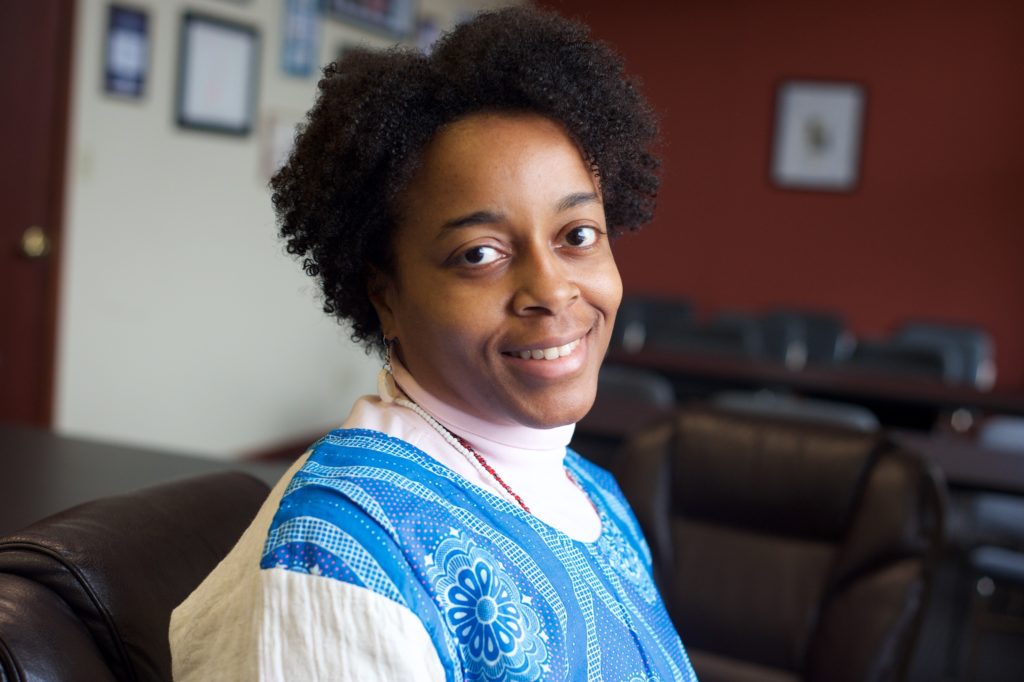
Serena: I think I can answer both of those questions together. So, I recognize that systemic and institutional racism are significant barriers to the work I’m trying to get done. I don’t personally feel responsible for teaching people not to be racist. That’s not my thing. It’s up to the folks who are in positions of power to decide that they will actively dismantle personal or systemic racism. I focus my energy on shifting the power dynamic to change who has the leadership, who has decision making authority, and who has power to affect what’s happening in their lives. So a lot of the work I do is around figuring out how to get more authentic community engagement in decision-making processes.
When you allow people to make decisions that directly impact them, you get better decisions.
And that has been successful and rewarding because when you allow people to make decisions that directly impact them, you get better decisions. You also get people to think about the fact that they should be the decision-makers. It’s not just an opportunity or a fluke, but this should really be what they’re doing and it could change their trajectory and how they interact with some of these systems.
So, a few years ago, I worked with a group of funders to bring in the Association of Black Foundation Executives to do a training on Racial Equity and grant-making for foundations in the region. We made sure folks had their staff and their board go through the training. Then we brought in other resources and tools for people to understand how to improve philanthropy related to Racial Equity.
All of that is good, but it’s not enough and it’s not lasting. And for some foundations, it was just another training to attend. You can go back to some foundations four years later after we’ve completed the training and we’re still trying to figure out what to do and how to do it. Part of it is because we don’t have enough people in foundations who are a part of the affected community. So until we have more people of color in philanthropy making decisions about resources, we’re always going to be training people to understand a problem they don’t have themselves.
Until we have more people of color in philanthropy making decisions about resources, we’re always going to be training people to understand a problem they don’t have themselves.
So my focus has been on figuring out how to have decision making at the community level. With the partnership with Resiliency in Communities After Stress and Trauma (ReCAST) for St. Louis County Department of Public Health, the reason we suggested the participatory budgeting process is because it allows the community to make decisions on resources. And not just for their project, but then I want them to make the connection that, “Whenever I vote or weigh in on something, whenever I’m civically engaged, I am taking greater control of my destiny.” So it’s reinforcing a behavior I would love to see more of in our community. People acknowledging they have power and using their power. That’s my approach to Racial Equity. It’s great to have trainings where people can send their CEOs and to have a fund. That’s needed. But I don’t see that having the same level of impact a starting to change out who some of the CEOs are.
One thing I noticed in all the interviews is that there’s this underlying frustration of, “We’re here. We’re doing the work. Help us because we’re convening you, talking with you, getting you together, doing a training for your staff.” But where’s the follow-through?
Erica: They’ve got to want to do it. Otherwise, you are in the same spot with no progress. I will say I am proud of ReCAST because it’s something that has really gotten right at the grassroots level to speak with community members about the work and their needs. During the application design phase, perhaps you did not think that it would have the wings that it has had to date in being able to connect in community the way that it has. All those working directly on these efforts should be proud and continue to push forward.

For Promise Zone, we partner with groups and organizations who have the ability to reach residents through ReCAST or through our Neighborhood Leadership Fellows program (a partnership with a University of Missouri extension), and the canvas day then we did with FTF – people are at the center and their voice matter. How do we engage with them? Because this work is so long, the flip side of it is that with some of our service providers, we survey residents to death. We asked too many questions without deliverables or how we plan to develop a strategy around the information shared. But it’s having the ability to say, “We want you to know that this work takes a long time. There’s a lot of data. And system changes take a long time.” It’s educating the residents so that they will continue to be engaged, and be involved, and be supportive of the work. Lastly, invitations to residents to have a seat at the table better demonstrates the commitment to the work and the need for the authentic voice of people.
Serena: I had high hopes for ReCAST from the beginning. The Mental Health Board initially was going to apply. We were on the technical assistance call and it turned out that Spring Schmidt from St. Louis County Department of Health was on the same call. So we both thought, “Well, we don’t want to have two applications competing in the region. Let’s do one application.” So when we started at the very early planning conversations, it was the Mental Health Board, the city health department, and the county health department trying to figure out how we could do something that was regional, that was focused on community, and that made sure that everybody got their priorities met.
I had heard about participatory budgeting maybe two or three years earlier from Michelle Whithaus and I had been trying to figure out, how do we use this? Spring had taken a class on participatory budgeting years ago. So we were both like, “This is the thing that we need to have happen in community.” But the vision that I’ve had from the beginning is that this is really just a starting point. It’s a tangible way for people to see that when they participate, something can change in their community right in front of their eyes. So I’m optimistic that it will only get bigger and stronger from here. Working through the county systems and departments, that was a challenge in year one. Going forward, smoothing some of that out, I think we’ll get an even greater impact.
Every conversation I’m in, I’m planting the seed about the importance of community in the decision-making process.
And now other funders are looking at how they can do participatory budgeting. Another foundation has contacted me to figure out, how do we engage community or have more community voice? Our organization is trying to figure out how to integrate community into the review process for decisions on grantmaking. So every conversation I’m in, I’m planting the seed about the importance of community in the decision-making process, whether it’s through participatory budgeting or your existing grant review or whatever you have. If you are making a decision that impacts people, those people need to be a part of that decision making.
Can you share a story from the people who have participated and then said how they were impacted as a result?
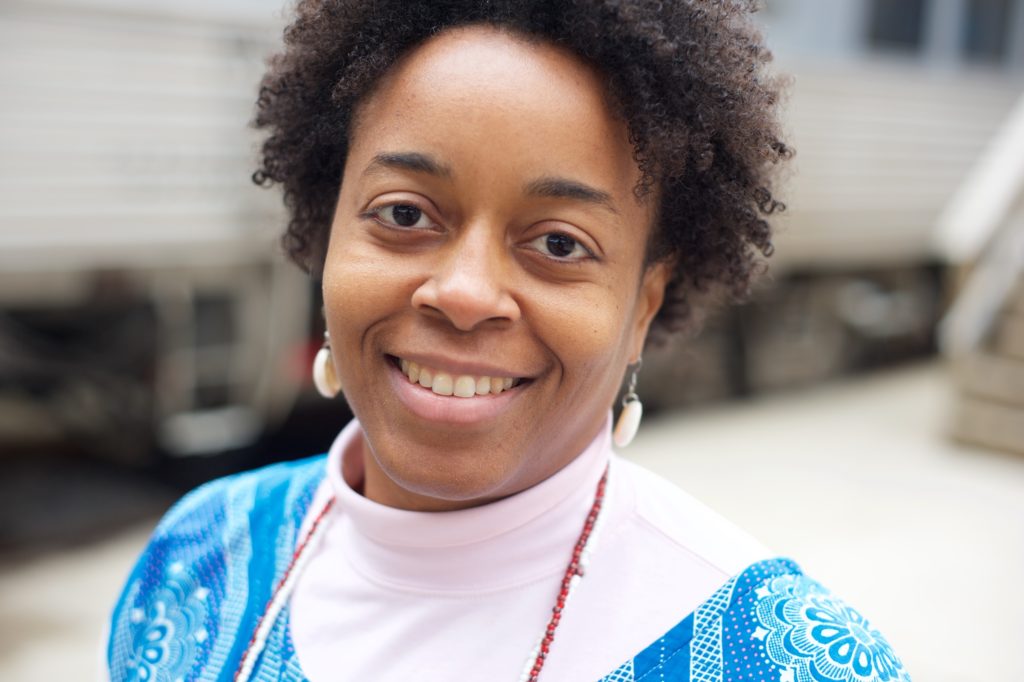
Serena: The St. Louis Mental Health Board staffs an initiative called the System of Care to improve the service delivery system for youth that have serious emotional disturbances. We engaged consumer reviewers, like caregivers or parents of young people who have experienced serious emotional disturbance, to read grant applications. We asked a reviewer, “Do you feel like this program would meet the need that your child has had or that your family has experienced?” Initially, I think she thought that we were trying to get her to tell on the program. But I explained, “No, based on your experience, we really want to know what works and what doesn’t work.” So she went through the whole process, she scored the application, and she said, “So what are you going to do with this?” And I said, “This is how we decide how we invest money and who gets something and what kind of feedback we give back to the agency.” And she was really moved by the fact that something that has been an incredibly challenging ordeal for her could help somebody else.
Decision makers aren’t always paying attention. People are saying at the top of their lungs, “This stuff is broken. It doesn’t work.”
Because when you listen to these stories from families who cannot access services, no matter what they do – and it’s always these really small procedural issues that are keeping them from getting what they need for their family – they get so frustrated. They have said, “Here’s what’s not working.” But nobody cares to make a change or do anything about it. Sometimes we get this narrative that people are voiceless. It’s not that they’re voiceless. Decision-makers aren’t always paying attention. People are saying at the top of their lungs, “This stuff is broken. It doesn’t work.” And nobody does anything. So that experience gave her some solace that her pain could be used to help somebody else. And it also made her think about other ways she could advocate and be involved in other processes like this.
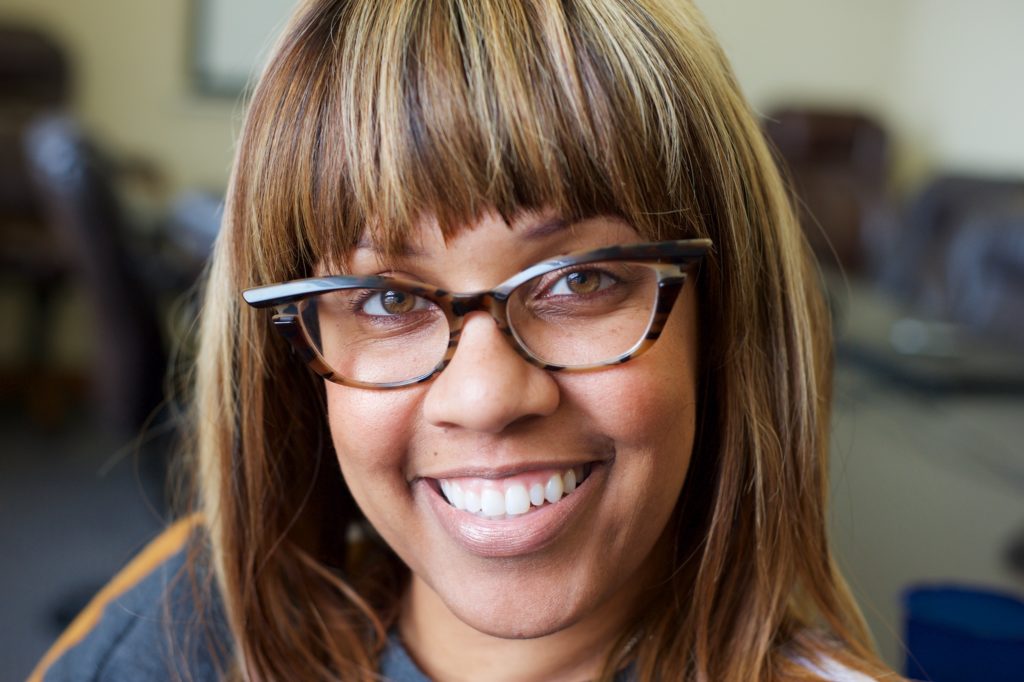
Erica: With the Neighborhood Leadership Fellows program, we received 100 applications for 23 slots. Community wants to participate. They want to be involved in some capacity. They want to have a voice in the transformation of their communities. We must continue to open doors for more community to participate in the neighborhood work and even assisting companies think through community ownership models as franchises look to move into certain neighborhoods. Economic injustices only begin to change when we attack the problems head-on.
What are some barriers that if they were lifted would help you do your work even better?
If it’s really about the call to service, it doesn’t matter who gets the credit. Let’s just do the work.
Erica: Leadership. This is the way we have always done business is no longer acceptable. The status quo has gotten us to where we are currently; with a lot of work ahead of us for an equitable, progressive region. If it’s really about the call to service, it doesn’t matter who gets the credit. Let’s just do the work.

Serena: Mine is a more of a technical response. If there was a way to force all of the funders to pool their resources and have one decision-making process, that would be a game-changer. A lot of the problem is that when you see dysfunction, it’s funded to be dysfunctional. It’s not an accident. It’s like people are responding to the requirements that are put on them by funders. So if I say, “I’ll give you this money, but you can only serve people who live on this street.” And then you’ve got to go out and get a grant for the person who lives on the next street and another grant for people who don’t have a house at all. And as an agency, you’re trying to figure out how to manage these three competing funding requirements, that takes away from the time that you have to actually do your work and it also makes your work environment much less flexible.
We need to figure out how to fund things in a way that makes it easy to serve people and easy for people to get their needs met. Right now, that’s not a thing. Eligibility requirements, how old you are, where you live – all of that stuff creates an unnecessary burden, and it frustrates people. When I show up to a service because I’m desperate, and that’s my last hope, and you tell me that I have to bring a copy of my utility bill and my birth certificate, it’s like, nobody wants to go through all that to get help. And it’s all based on funders. No organization sits around thinking of ways to make it hard to serve somebody. It all comes from the funding source. If that can be fixed, that will change a lot.
I came into philanthropy because I was naïve enough to think I could have an impact on it. And I try. I have a lot of conversations about aligning funding. But when I was an executive director of an organization, it seemed ridiculous to me that if I got a grant for $10,000, I needed to turn in receipts for how many notebooks I bought or whatever. At the end of the day, if you give me $10,000 and I say I’m going to serve 100 kids, your question should be, “Did you serve those hundred kids? What’s better for them as a result of your service?” Not, “Did you buy notebooks or pencils?” Because I’m going to get what I need to serve children in the best possible manner.
I think there’s a lack of trust from funders to providers. There’s this risk aversion and there’s this not wanting to look like we made a bad investment or bad decision. All of us are stewards of other people’s resources. There are very few foundations that are like family foundations where you’re spending your own money. So nobody wants to be the one that came in and wasted somebody else’s money, whether it’s tax dollars or endowment. So we’re hypersensitive about spending money on something if we cannot almost 100 percent guarantee the outcome. Which means that we don’t really do anything innovative. We don’t get to be creative. We take no risks. We just keep giving money to the same institutions to do the same stuff. And I don’t think it’s because somebody was burned. I think it’s because we just feel like that’s what it means to be prudent.
If the money was there – granted people have to believe in Racial Equity, and then there needs to be the money to fund it – what could the Racial Equity Fund do to help the work you do?

Serena: I know that the reason the Fund was put forth as a strategy was because, at some point, we did have more money in the region devoted to Racial Equity. So there were more civic leaders going through those trainings. I didn’t experience that, so I don’t know how transformational that was or what it did for leadership during that time period. My assumption though is that if the resources went away that maybe people weren’t transformed in the way that they anticipated.
Erica: There are some ongoing anti-bias and anti-racism training currently underway with representation from various organizations, government, and corporations. The 2.5-day workshop is only the beginning to dialogue and transformation that is required. We need to talk about goals and strategy from having completed the training in addition to accountability mechanisms being put in place by companies going forward having had completion.
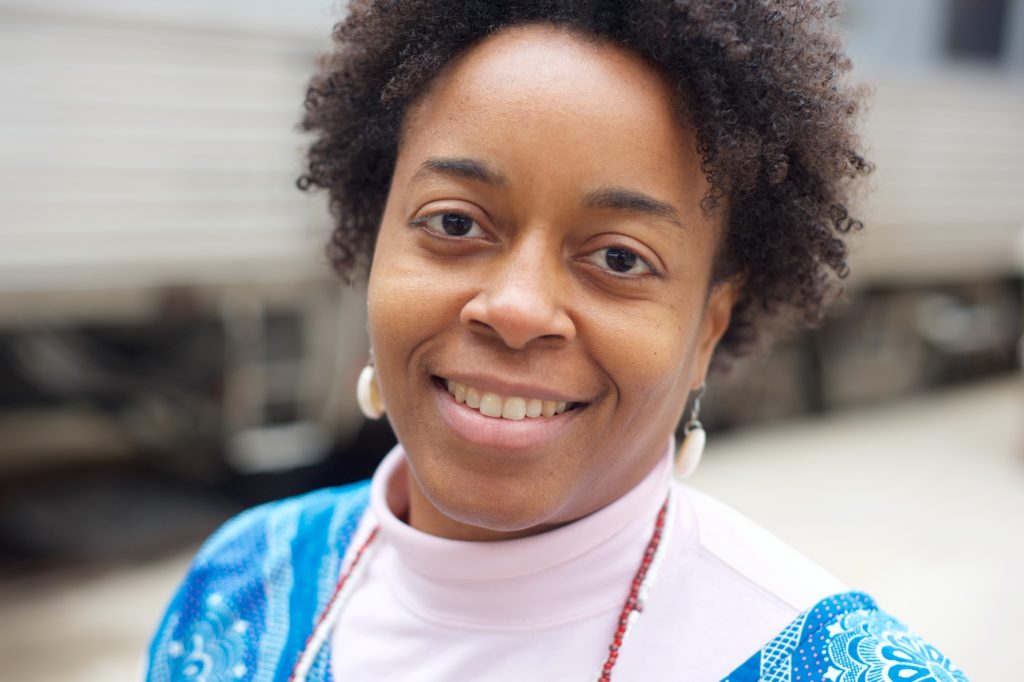
Serena: Right. This is not to disparage the fund, because I believe it has potential. But at the bottom of all of this, if a person wants to address racism, he or she will make the effort to figure that out. A person will get resources, talk to people, read, and go through a training. However, if a person is going through a training because it’s what’s expected, but has no desire to actually do anything with it, it is highly unlikely that that person is going to have a transformational change as a result of that training. So if the sole focus is on making trainings available, I’m not sure if that’s enough.
What if the Racial Equity Fund could fund more than trainings and if there were things people could apply for in their organizations? How would it help the Promise Zone or the people asked to be a part of the participatory budgeting process?
Serena: That’s exactly what I was thinking. It would be great if the Fund could be used to create community infrastructure for leadership development and self-care. That comes up a lot when I look at other regions that I consider to be progressive. So if we had a fund that could be used towards that to actually position community members to take up leadership roles in issues that are important to them and prepare the community to start to advance their own agenda and then included the self-care, because there’s a real risk of burnout when you’re working on something that is that personal and that close to you, that would be significant. I just have a difficult time investing a lot of energy and trying to get individual people to change who they are.

Serena Muhammad and Erica Henderson. (Photostory by Lindy Drew/Humans of St. Louis)
What would a Racially Equitable St. Louis like look like to you in 2039?
Serena: A strong indicator of equity is when families have access to high quality, safe, and welcoming public education no matter where they choose to live. This means I don’t have to move out of my neighborhood or bus my children across town to make sure that they get a good education. It also means every district is prepared to provide a safe environment for children to learn with teachers who are culturally competent and willing to work with students who may or may not look like them. Strong public schools would be a critical milestone, but there are steps along the way that would be necessary to get us there. Like changing the way schools are financed, creating more affordable housing to break up areas of concentrated poverty in our region, and improving hiring practices across all sectors so that more people have access to careers that support economic mobility. When people can access careers and live where they want, that creates stability in families and communities. This stability then leads to the civic engagement that is needed to support strong public education. Moreover, a well-educated and well-resourced community is the nucleus for creating and sustaining the kind of change we need in our region.
Erica: Taking the six goals of the Promise Zone, and having the ability to advance those pillars, to provide true access for all 200,000 residents that reside in this particular geography. Removal of barriers, limitations, fragmentation, and economic injustices that we currently have in the region, which have caused most of the challenges. Equity across the board is critical for creating the necessary framework for progress through public policies, system design, and intentional investment in communities of color. Infrastructure investment is null and void unless we recognize the power of people, place, and purpose. Quality education and exposure to workforce training opportunities will also be critical to change the trajectory of families as they seek self-sufficiency and have the ability to create generational wealth on their path of economic mobility. Action will be mandatory in order to realize the vision through strategic partnerships and collaboration for new and innovative opportunities for prosperity.
Erica Henderson
Director, St. Louis Promise Zone, St. Louis Economic Development Partnership
Serena Muhammad
Director of Strategic Initiatives, St. Louis Mental Health Board

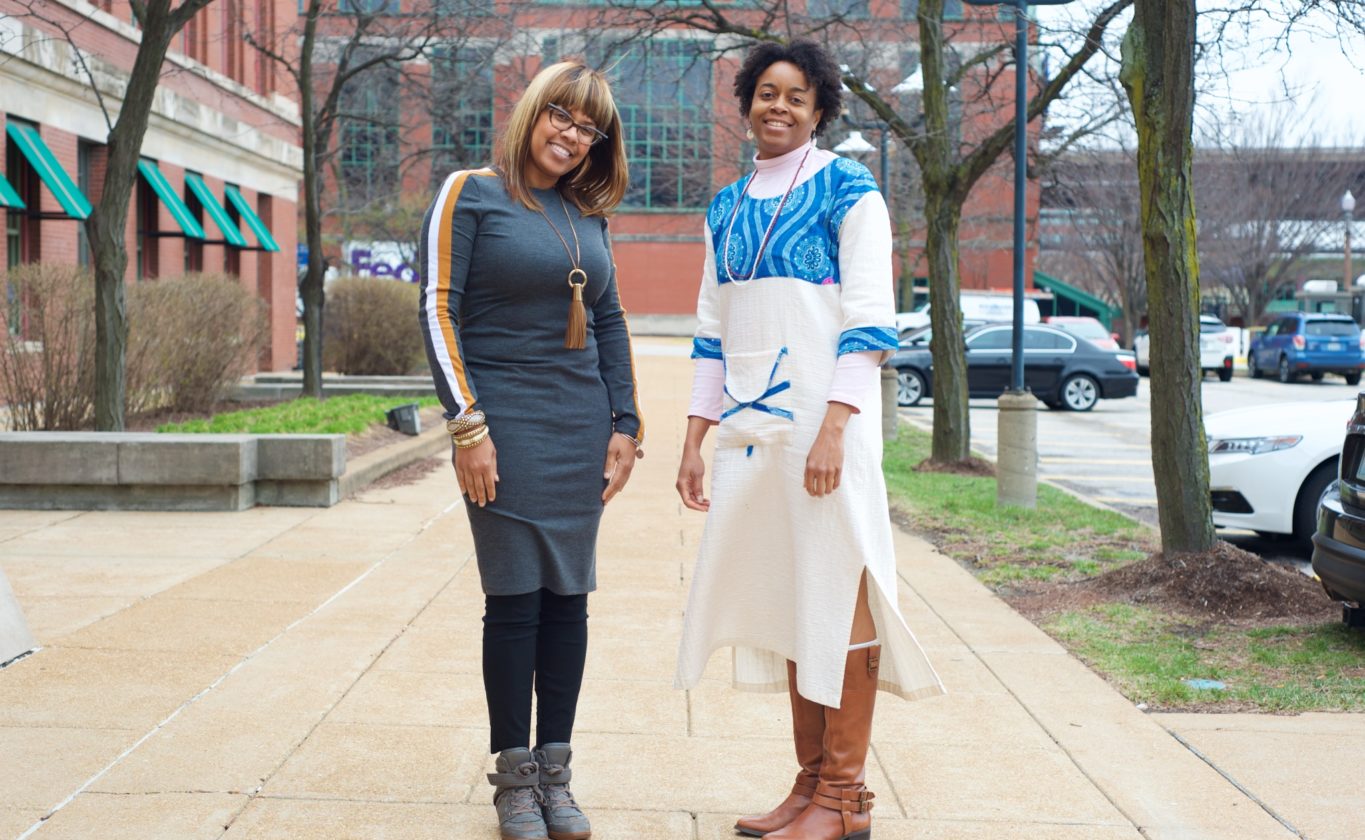
#FwdThruFerguson